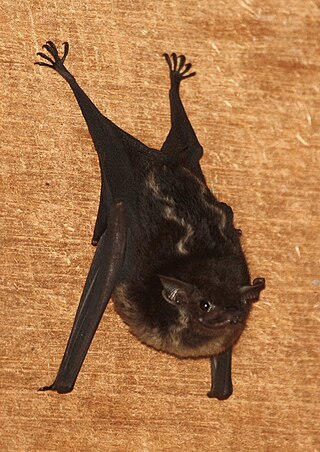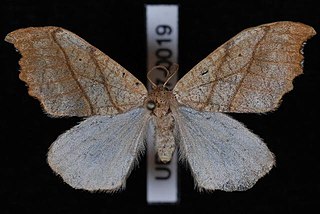
Diporiphora is a genus of lizards in the family Agamidae. Most species in the genus are endemic to Australia, but two are also found in New Guinea.
The bronze catfish, also known as the giant catfish, the roundsnout sea catfish, or the two-line sea catfish, is a species of catfish in the family Ariidae. It was described by Achille Valenciennes in 1840, originally under the genus Bagrus. It inhabits marine, brackish and freshwaters throughout the Indo-western Pacific. It reaches a maximum standard length of 62 cm (24 in).

The greater sac-winged bat is a bat of the family Emballonuridae native to Central and South America.
The yellow isthmus rat is a species of rodent in the family Cricetidae. It is found only in Panama. It was discovered by W. W. Brown Jr. on the southern slope of Volcan de Chiriqui. He found it common in the upland forest from 1000 to 1500m, but no specimens were taken above or below these elevations. Museum records specify two isolated populations in western Panama, one at Cerro Colorado where R. Pine et al. collected in 1980 and at Cerro Hoya on the Azuero Peninsula by C. Handley in 1962. The presence of I. flavidus or a closely allied form in Costa Rica is probable, however, no specimens have been reported. There are no currently known fossil records of Isthmomys.

The western green lizard is a lizard of the family Lacertidae.

The white-browed gnatcatcher is a species of bird in the gnatcatcher family Polioptilidae. It is native to central and South America.

Clanis bilineata, the two-lined velvet hawkmoth, is a species of moth in the family Sphingidae first described by Francis Walker in 1866.

Felimare bilineata is a species of colourful sea slug or dorid nudibranch, a marine gastropod mollusc in the family Chromodorididae.

Felimare is a genus of sea slugs, dorid nudibranchs, shell-less marine gastropod molluscs in the subfamily Miamirinae of the family Chromodorididae.

Falcaria bilineata, the two-lined hooktip moth, is a moth in the family Drepanidae. It was described by Packard in 1864. It is found in North America, where it has been recorded from Newfoundland to New Jersey, west to Oregon and north to British Columbia. The habitat consists of deciduous woodlands.

Melanoneura bilineata is damselfly in the family Platycnemididae. It is endemic to Western Ghats in India, restricted to Kodagu and Wayanad districts.

Cordulegaster bilineata, the brown spiketail, is a species of spiketail in the dragonfly family Cordulegastridae. It is found in North America.

Hierodoris bilineata is a species of moth in the family Oecophoridae. It is endemic to New Zealand. This species is classified as "At Risk, Naturally Uncommon" by the Department of Conservation. It is possible that this species gives birth to live young rather than lay eggs as is the norm.

Magallana bilineata, commonly known as the Philippine cupped oyster or slipper oyster, is an economically important species of true oyster found abundantly in the western Pacific Ocean, from the Philippines to Tonga and Fiji. In 2020 an exotic population was discovered in north-east Australia. They grow attached to hard objects in brackish shallow intertidal or subtidal waters, at depths of 0 to 300 metres. They are cultured extensively in the Philippines, where annual landings can range from 11,700 to 18,300 tons. They are known as talaba or talabang tsinelas in Filipino to distinguish them from talabang kukong kabayo

Winifred Hallwachs is an American tropical ecologist who helped to establish and expand northwestern Costa Rica's Área de Conservación Guanacaste (ACG). The work of Hallwachs and her husband Daniel Janzen at ACG is considered an exemplar of inclusive conservation.

Dibernardia is a genus of snakes of the family Colubridae.
Dibernardia affinis is a species of snake in the family Colubridae. The species is native to Brazil.
Dibernardia persimilis is a species of snake in the family Colubridae. The species is native to Brazil.
Dibernardia poecilopogon is a species of snake in the family Colubridae. The species is native to Brazil, Uruguay, and Argentina.














